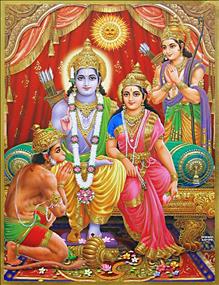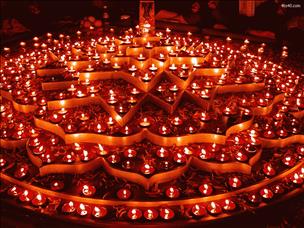Deepawali is now the most captivating annual event celebrated with enthusiasm by both household and recluses.
However, except some ritual practices added, Deepawali had no mystic, mythological or symbolic dimensions. It was seen as the epitome of people’s endeavour to fight against darkness, which later widened into a battle against all that was evil, dark and gloomy; and as victory of good over evil.
Marathi saint Jnyaneshvara equated Deepawali illuminations with the light of spiritual knowledge with divine dimensions in his ‘Jnyaneshvari.’
Chakradhara, founder of Marathi Mahanubhava sect, a social and religious organisation, prescribes for his Gosavi pupils the way of celebrating Deepawali befitting a saint.
In his ‘Chaturvargachintamani,’ a mid-13th Century text, Hemadri established the tradition of sisters feeding their brothers on Deepawali Day.
Brahma Purana and others had already prescribed worship of Lakshmi or Mahalakshmi on Deepawali but after some kings (such as the Kolhapur’s Siddharaja) began worshipping the Goddess, the cult reached every house.
In ‘Prabandha Chintamani,’ Merutunga, a Gujarati Saint and thinker gives elaborate details of Siddharaja worshipping the goddess with offerings of gold, jewels, garments and camphor.
Inspired charity
After Deepawali gained popularity among various sects, it was linked with hygiene, strengthened ties (social and within the family), improved living and inspired charity.
As per one’s status and means, every household was required to repair and put in proper shape his or her monsoon-worn house and disinfect it with lime-wash.
The Brahma Purana acclaimed that lighting lamps on Deepawali is as virtuous as distributing alms equal to one’s body-weight. It cautions that one should not celebrate Deepawali unless the house has been duly cleaned and one wears new, or at least neat and clean bejewelled clothes.
It is inauspicious to eat any food unless one shares it with those held in reverence, members of the family and the village, and the household servants.
As Holi, the other Deepawali-like popular festival, was associated with harvesting of one crop, Deepawali was associated with the other.
Deepawali had now a set of rituals relating to dung-heap worship and the worship of cow-dung deified as Govardhana, the mythical mount, the worship of which Krishna had initiated. These rituals aimed at conserving the natural source of re-energizing agricultural lands which rains rendered dull depriving them of their fertility power.
Nitin Kumar (Exotic India)

The Coronation of Lord Rama is a reason for marking Diwali

Lighting Diyas is akin to giving alms




